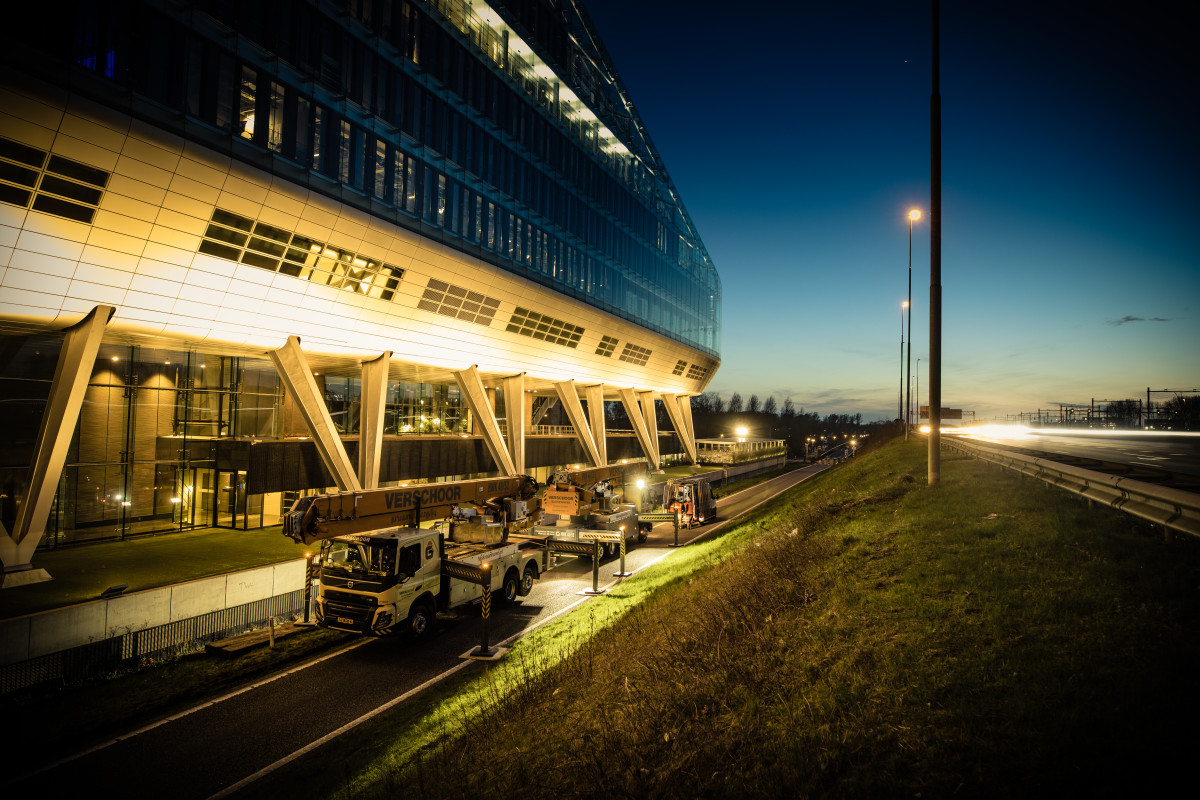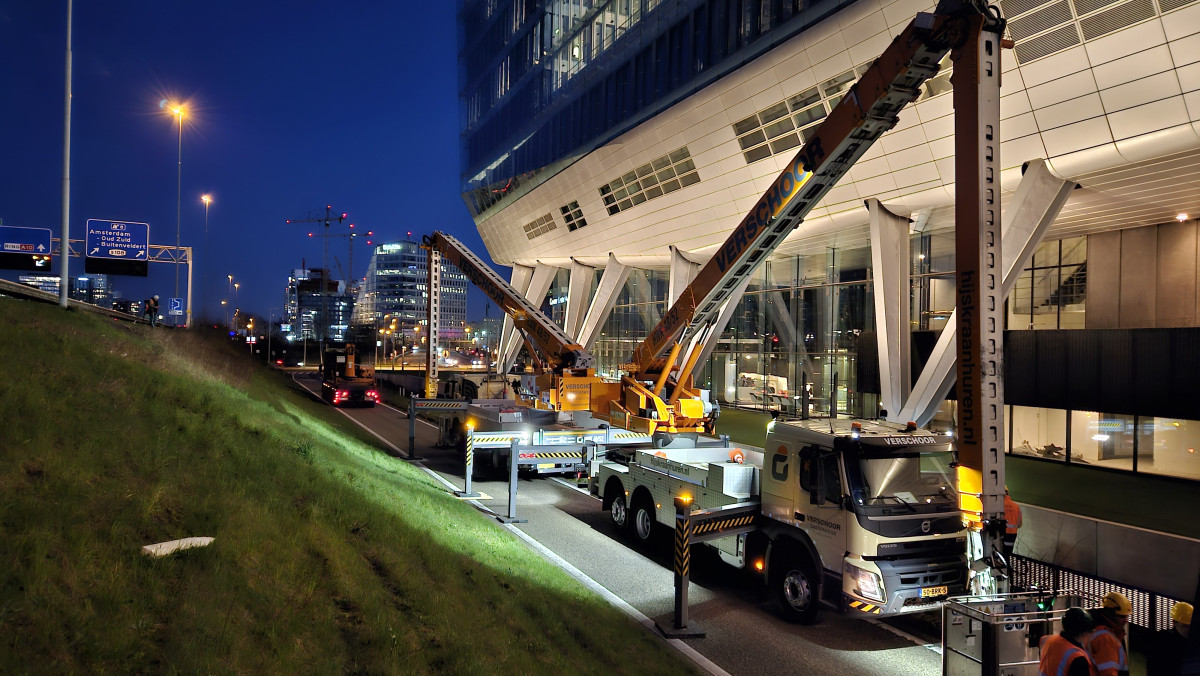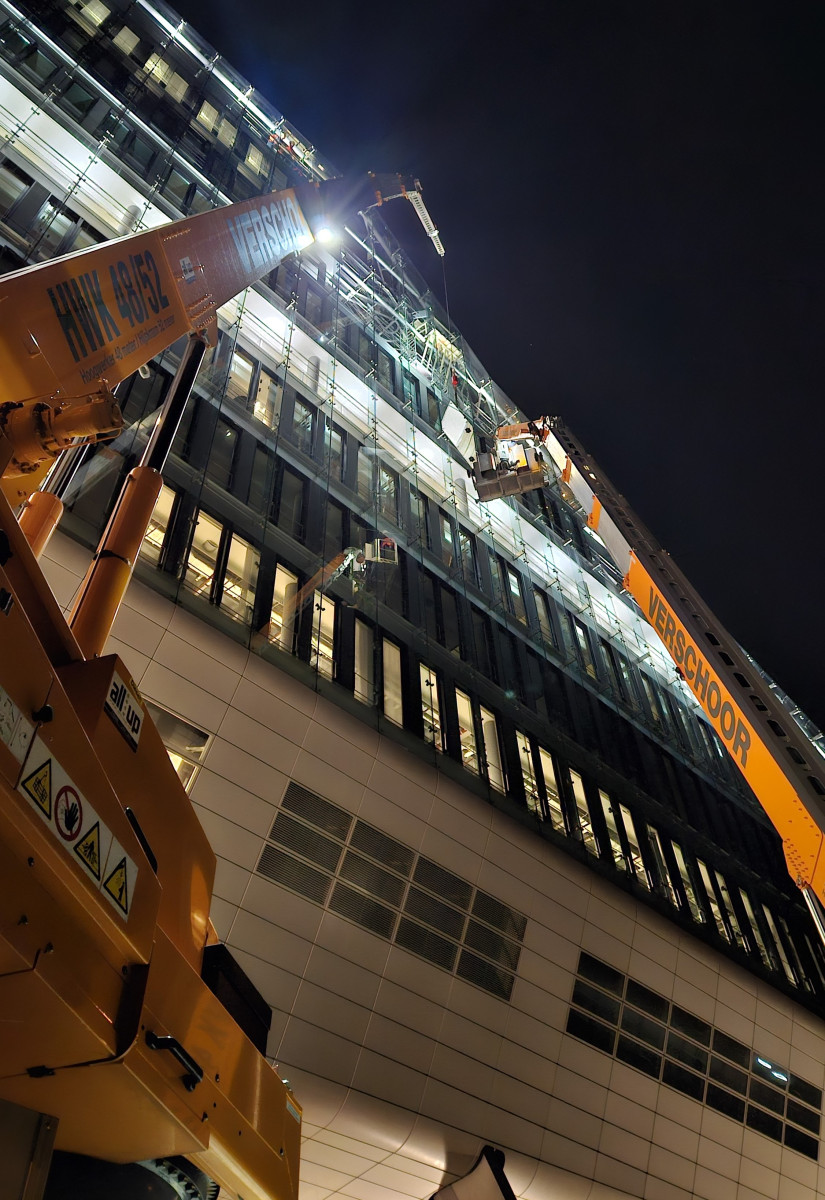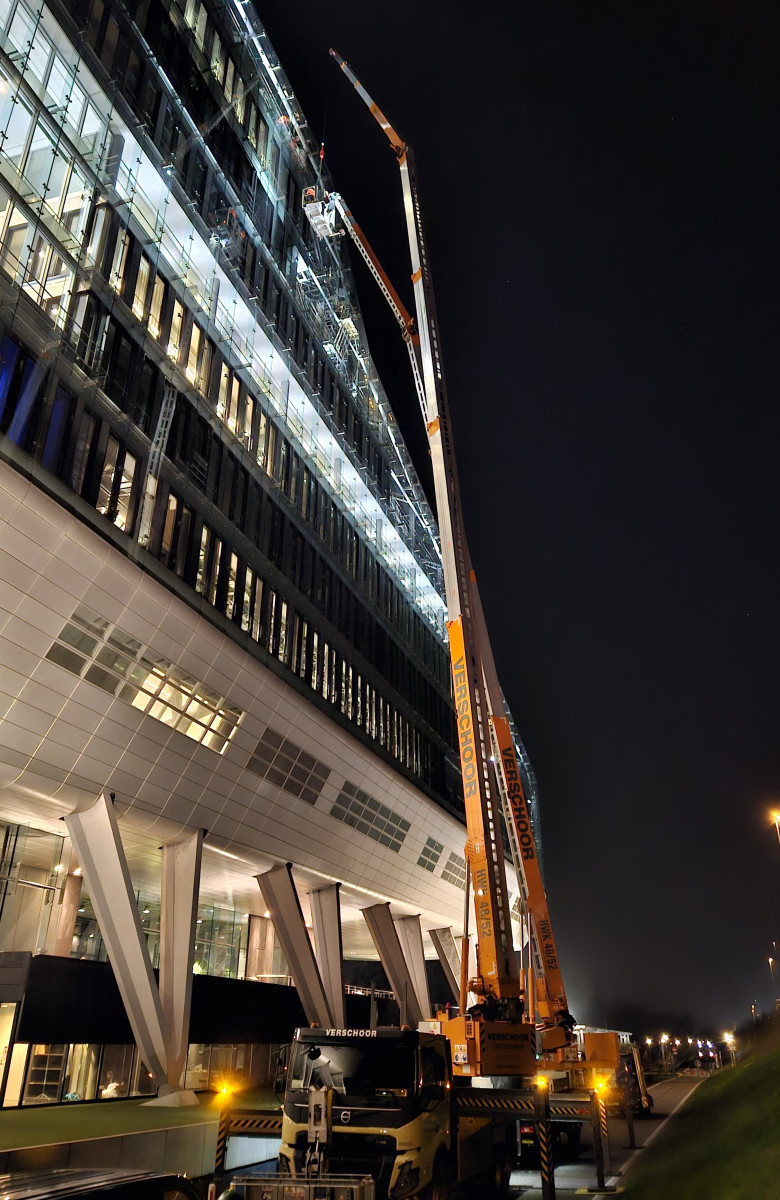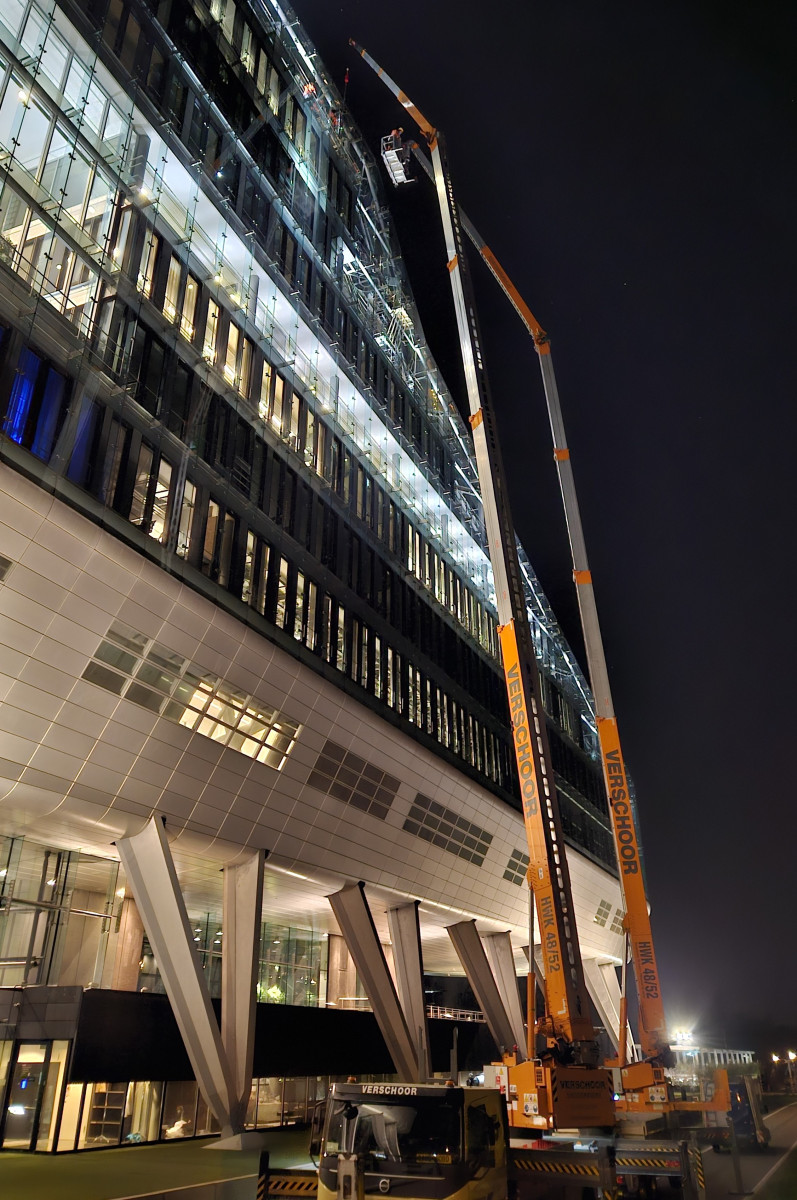Inventive lifting solution at ‘De Schoen’
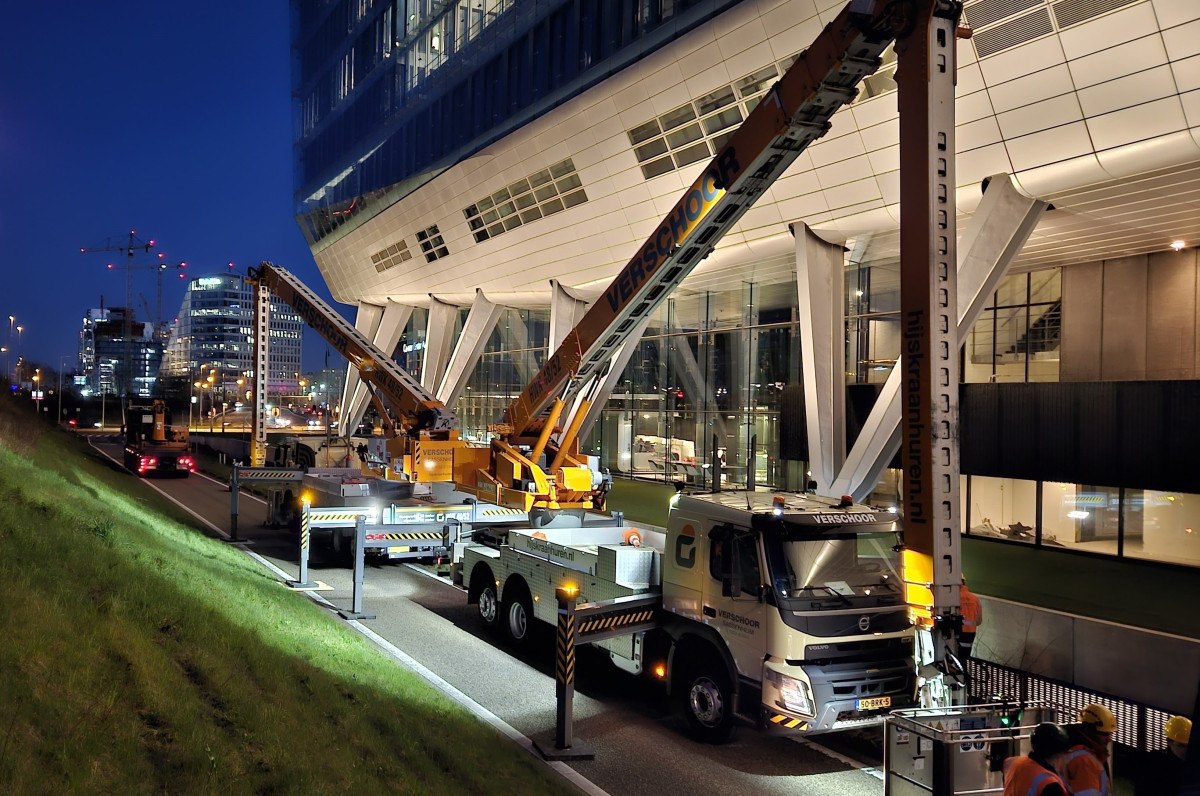
For the installation of new glass panels on the striking Infinity (De Schoen) building in Amsterdam, the Verschoor team developed a smart, efficient and sustainable lifting solution using two aerial platform cranes.
Glass exterior facade
Infinity, formerly ING House (nicknamed De Schoen), is a prominent office building on the Zuidas in Amsterdam. The building was built in 2002 as the headquarters of a large banking organization. The glass exterior facade gives a special appearance to the building.
Bus lane and approach route
These glass exterior facade panels also presented a challenge in terms of lifting. In the spring of 2023, a number of these 350 kilo panels had to be replaced. And that was easier said than done. ‘De Schoen’ is located right next to the A10 and on both sides of the building there are important thoroughfares, including a bus lane. Not an environment in which to position large lifting equipment to lift the glass panels. ‘De Schoen’ is also located under a flight path from Schiphol Airport, which implicates the necessary restrictions with regard to lifting height.
Option 1: two 400 tonners
With all these conditions and restrictions, Verschoor’s team set to work to find a lifting method to install the glass panels. It was not possible to obstruct the bus lane on the north side, so no cranes could be set up there. However, the glass panels to be replaced were on the north side. This meant that the crane would be set up on the south side and the glass panels would have to be lifted over the 48 metre high and 28 metre wide building to the north side. This was possible by using two 400-tonne mobile cranes with luffing jibs. This would require closing the road on the south side for several days for the supply and installation of the cranes with luffing jib.
Man basket deployment
In the Netherlands, the use of a crane with a man basket is only permitted if there is no other technical option for employees to work at height. In this project, the use of an aerial platform on the north side would provide a technical solution, but the accessibility of the bus lane there was crucial and therefore no exemption was granted for this.
Option 2: two aerial work platform cranes
Until the Verschoor team came up with a solution: deploying two light aluminium aerial work platform cranes on the north side during the night hours. The bus lane would then be closed for a number of hours at night for the work, but would still be accessible during the day. This solution met with the approval of the client and the permit authorities and that is why the lifting work was carried out in this way.
Advantages of using aerial platform cranes
- The setup of the aerial work platform cranes (HWKs) is quick and efficient, allowing sufficient working hours at night to install the glass panels.
- The HWKs are much smaller and lighter compared to two 400-ton mobile cranes, so much less heavy equipment is required. The use of the HWKs is therefore a lot more efficient and sustainable.
- Closing the road on the south side for several days due to construction and lifting work is not necessary, so there will be no inconvenience due to this closure.
Both HWKs can be safely positioned half-supported on the north side in connection with the sloping embankment of the adjacent A10. - Both HWKs can be converted in the same night to a second installation location on the bus lane to install a few more glass panels on the east side of the building.
- Communication between the two HWKs is direct and fast because the operator of HWK 2 is at the top of the building and operates the crane from there.
